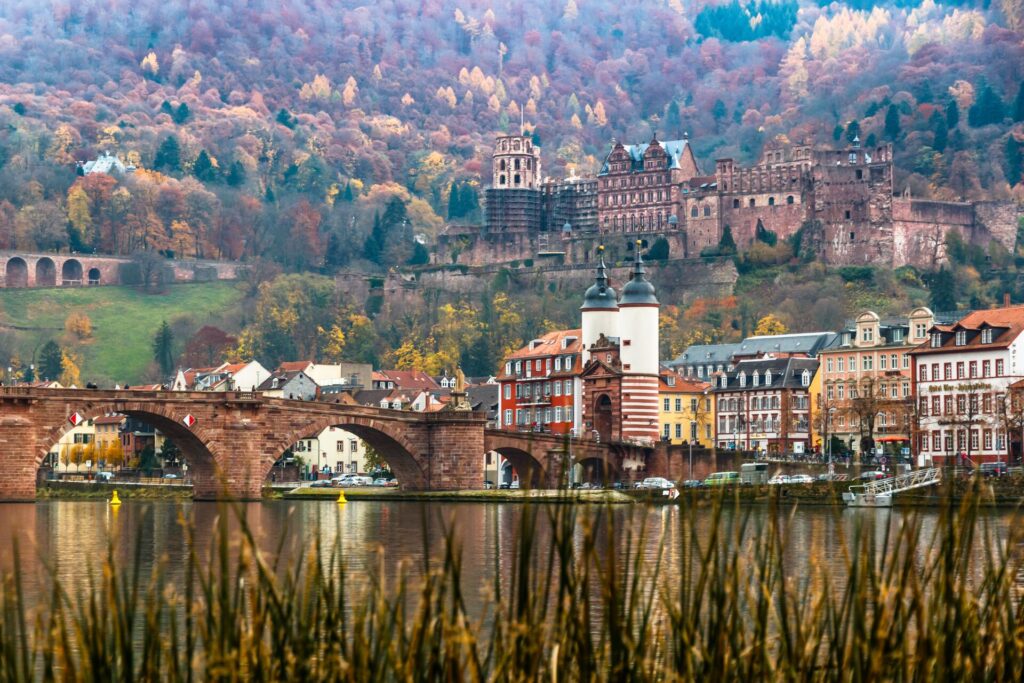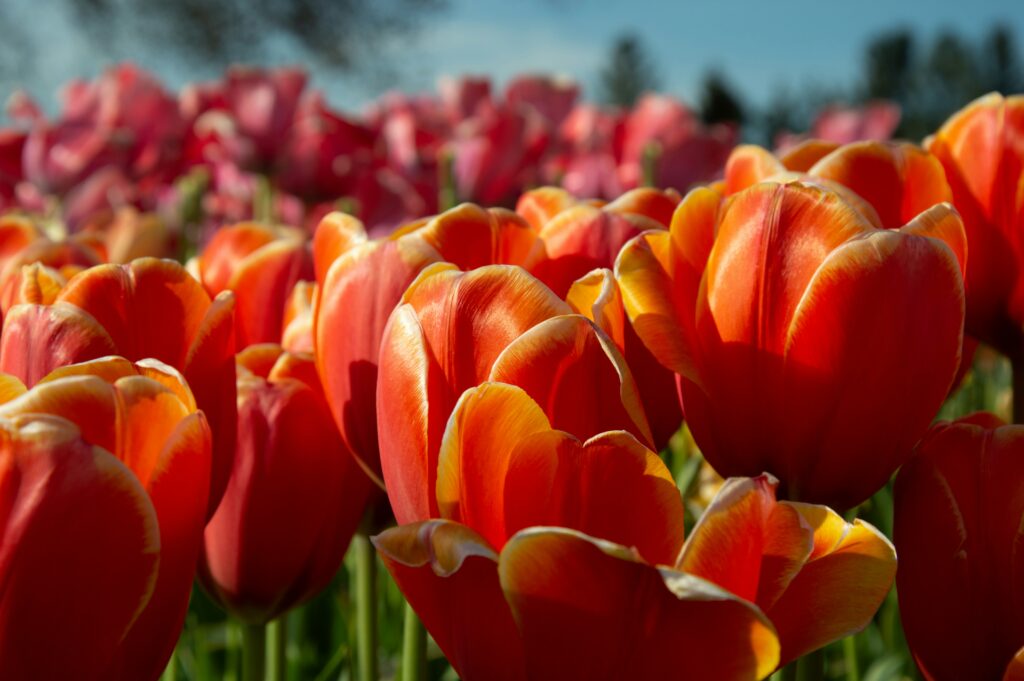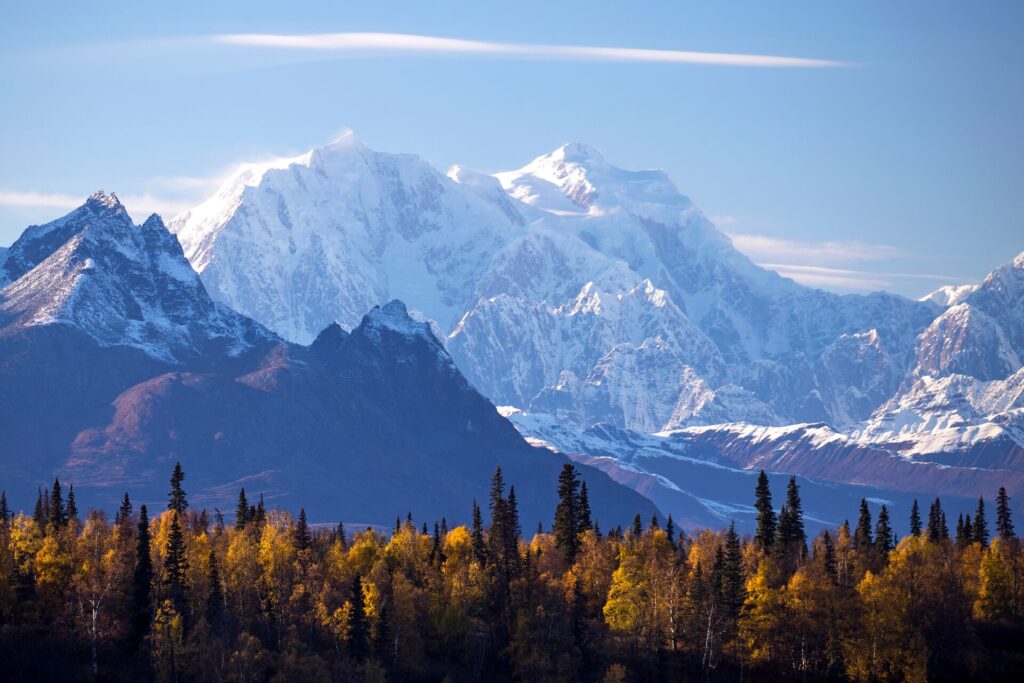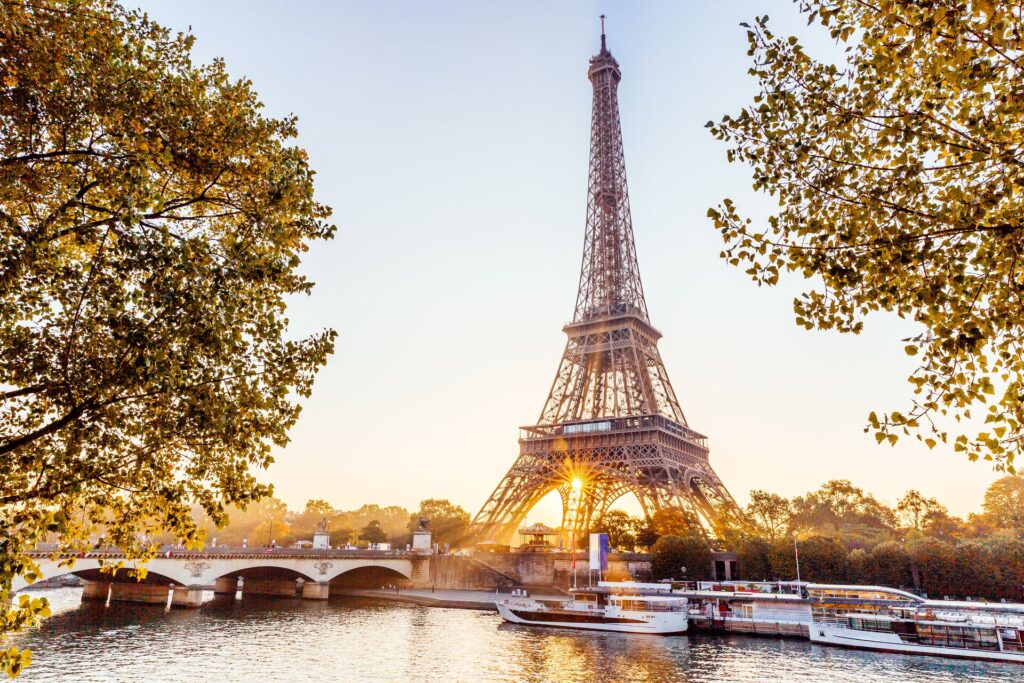15 Most Famous Landmarks in Germany You Need to Add to Your List
One of Europe’s largest and most influential countries, from Berlin to the Black Forest, Germany is packed with iconic landmarks that every traveler should add to their list. Whether you love towering mountains or historic monuments, we’ve put together 15 of the most famous landmarks in Germany that you should visit.
Step back in time at the medieval fortress of Neuschwanstein Castle, discover the symbolic significance of the Brandenburg Gate and admire at the architectural marvel of Cologne Cathedral. Or maybe traverse the picturesque landscapes of the Rhine Valley. Each offering a unique blend of history, culture and scenic beauty, there’s no shortage of iconic sites in Germany to fuel the curious mind.
Explore Germany’s most fascinating destinations for less when you book in our September Sale
For travel inspiration: Germany guided tours
1. Neuschwanstein Castle
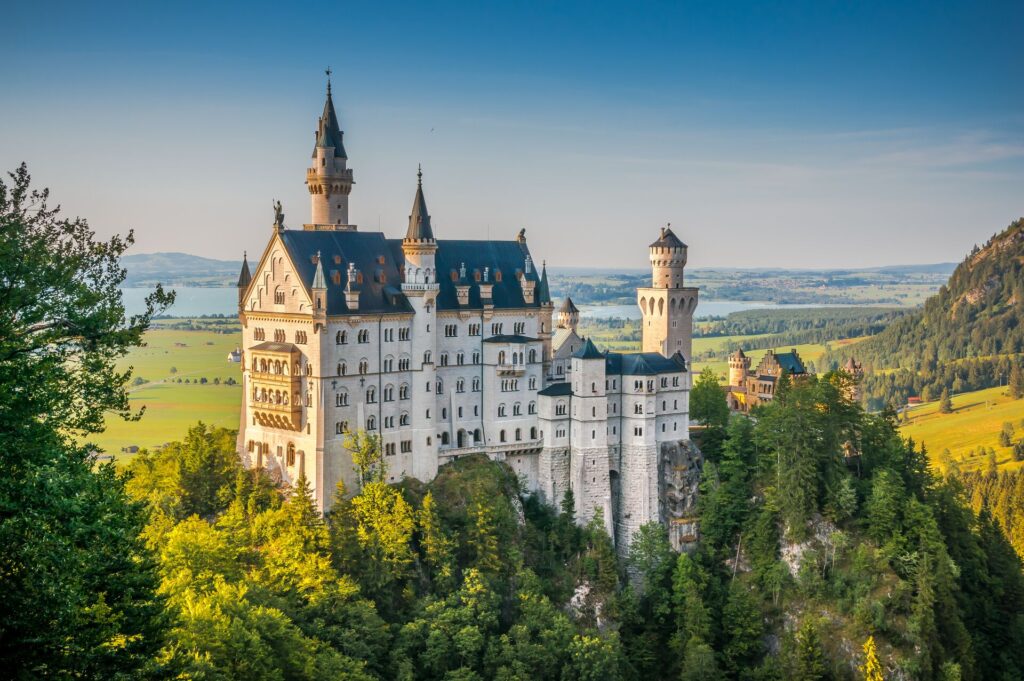
Taking pride of place in the Bavarian Alps, Neuschwanstein inspired Disney’s Sleeping Beauty Castle. Commissioned by King Ludwig II of Bavaria, the castle is a masterpiece of architecture, blending Romanesque revival and Gothic style and embodies the romanticism of the 19th century.
Following Prussia’s conquest of Austria and Bavaria in the Austro-Prussian War. Ludwig II, stripped of his powers, sought solace in fantasy, envisioning himself as a sovereign ruler within the castle’s walls. However, he never beheld the completed castle, as he passed away in 1886, and the final towers weren’t finished until 1892. Today it remains one of the most popular landmarks in Germany.
Discover this on: Highlights of Europe
A must read for castle lovers: What to expect when you visit the iconic Bran Castle after hours with Insight
2. Cologne Cathedral
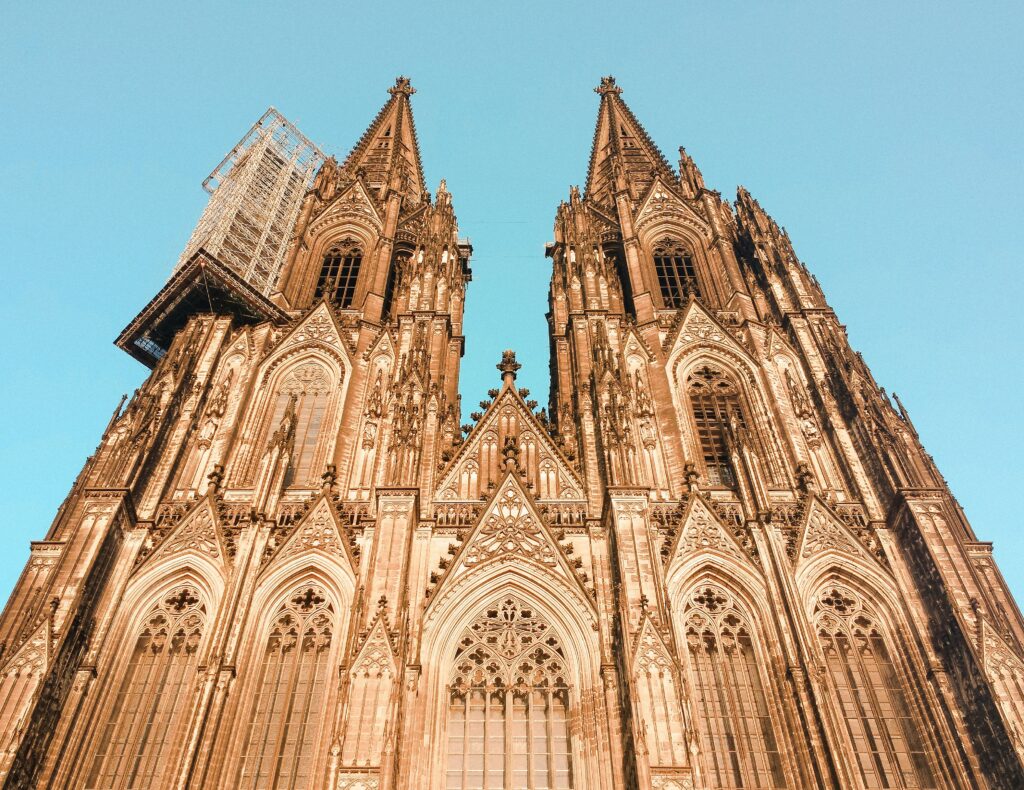
A masterpiece of Gothic architecture, this UNESCO World Heritage site is Germany’s most visited landmark, boasting stunning stained-glass windows and towering spires. Construction began in 1248 but wasn’t completed until 1880. Until 1884, the Cologne Cathedral was the tallest building in the world thanks to its towers which reach a height of over 500 feet.
The spectacular cathedral was built to house the Shrine of the Three Kings, which is said to contain the remains of the Three Wise Men from the Gospel of St. Matthew, who followed a star to Bethlehem to present gifts to Jesus.
During WWII, the cathedral was hit by 70 firebombs and 14 highly explosive bombs. Thankfully, its size and construction saved it from being utterly destroyed, as it served as a reference point for pilots flying over the city.
For tales of cathedrals: The Legend of The Golden Virgin, France’s Most Important Statue
3. Brandenburg Gate, Berlin
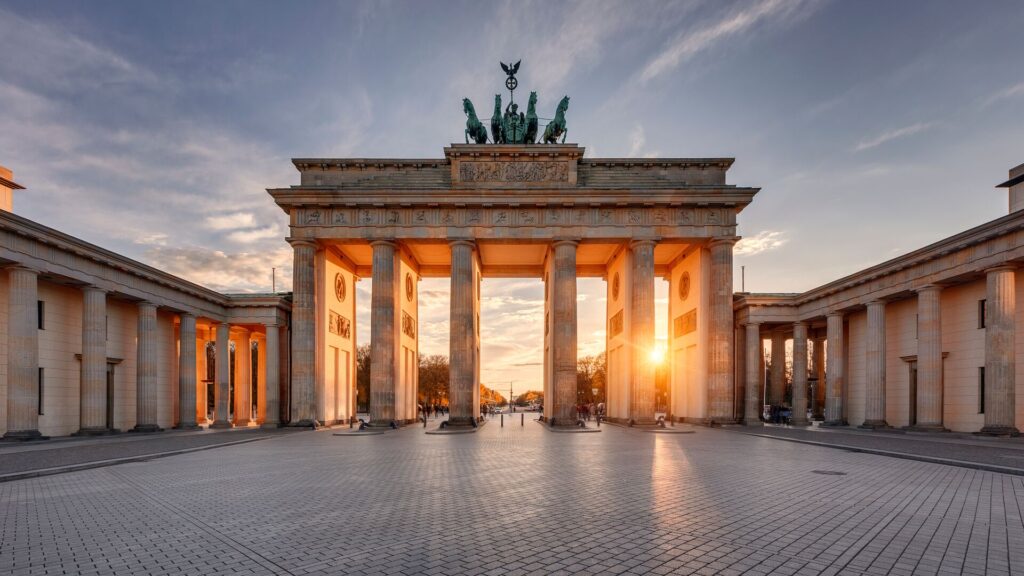
Symbolizing unity and peace, this iconic monument in Berlin played a significant role in Germany’s history. Built in the late 18th century and modelled on the Propylaeum of Athens’ Acropolis, it was commissioned by King Frederick William II of Prussia as a grand entrance to the city.
Throughout its existence, the gate has witnessed many historic events, including Napoleonic conquests, World War II, and the division of Berlin during the Cold War. After the fall of the Berlin Wall in 1989, the Brandenburg Gate became a symbol of German reunification.
Discover this on: Northern Capitals
If you love Greek architecture you may enjoy reading: Welcome to Athens, recently voted Europe’s best cultural destination
4. Saxon Switzerland National Park
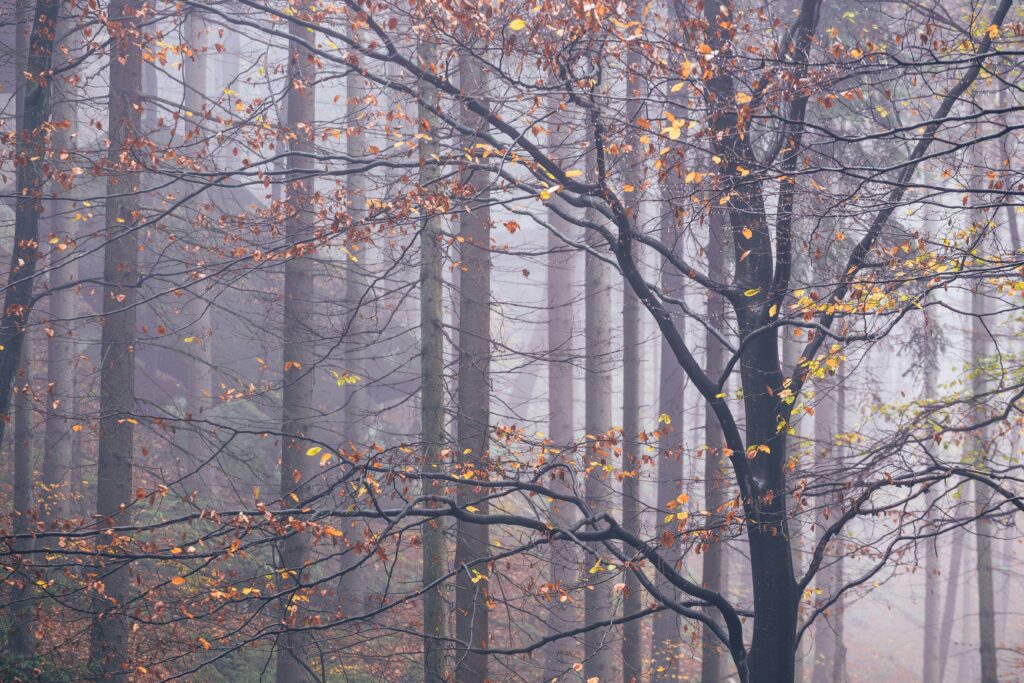
The Saxon Switzerland National Park, located in the eastern part of Germany, is a stunning landscape of rugged sandstone formations, lush forests and picturesque river valleys. Spanning over 93 square kilometers along the Elbe River, visitors can explore the park’s numerous trails and unique rock formations. Sculpted by millions of years of erosion, enjoy to panoramic viewpoints and hidden caves at this stunning natural landmark. The park is also home to diverse flora and fauna, including rare species of plants and animals.
You may also enjoy reading: These are the best national parks to visit in Eastern USA
5. East Side Gallery, Berlin

A showcase of art, history and freedom, The East Side Gallery stretches along a remaining section of the Berlin Wall. This open-air gallery is home to over 100 murals created by artists from around the world.
The gallery emerged in 1990 as a symbol of hope and unity following the fall of the Berlin Wall, transforming a once-divisive barrier into a canvas for artistic expression. Each mural tells a unique story, and visitors can admire renowned artworks such as Dmitri Vrubel’s “My God, Help Me to Survive This Deadly Love” depicting the kiss between Soviet leader Leonid Brezhnev and East German leader Erich Honecker, and Birgit Kinder’s “Test the Rest” featuring a Trabant car breaking through the wall.
See Berlin on: Best of Germany
Read more about this tour: Experience the Best of Germany’s Past, Present and Future in 12 Days
6. Lake Constance
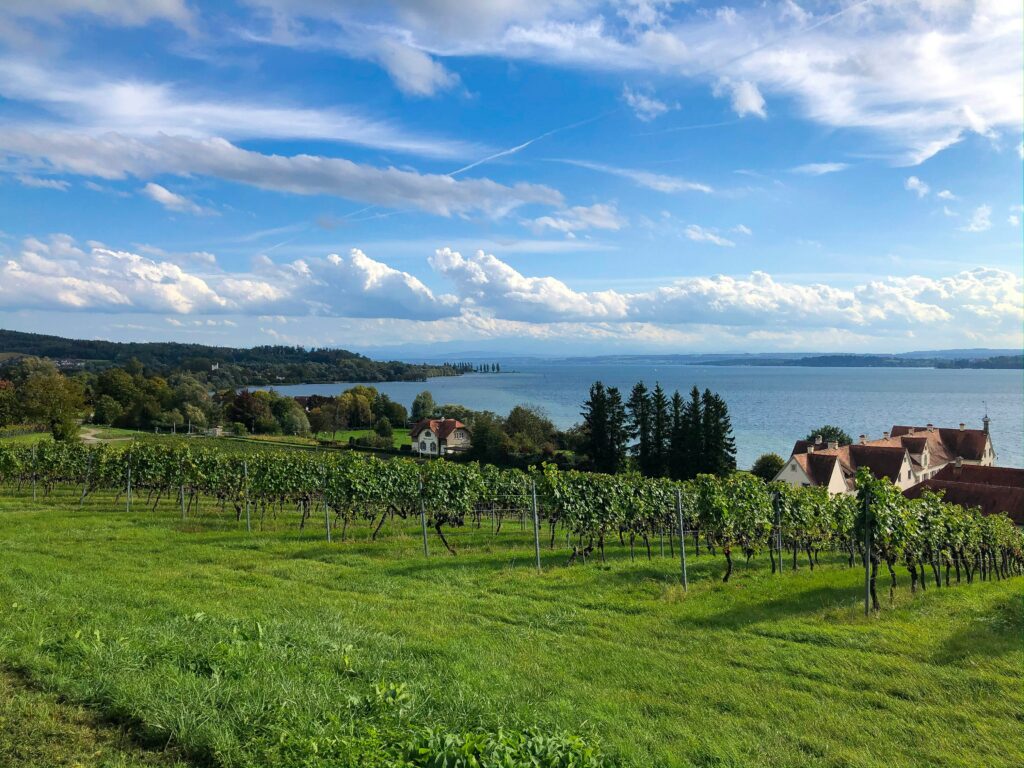
Lake Constance, located in southern Germany, is one of the largest freshwater lakes in Europe, spanning approximately 63 km long and 14 km wide. Its pristine waters are fed by the Rhine River with stunning surrounds, including vineyards, orchards and charming medieval towns. A popular destination for outdoor activities including hiking, cycling, and water sports, visitors can enjoy a trip to Mainau Island with its famous botanical gardens or Meersburg Castle, offering panoramic views of the lake and surrounding countryside.
A popular natural landmark in Germany, the Lower Lake is one of the main stopping-off points for Europe’s migrating birds, making it a must-visit destination for all keen bird-watchers. It is also home to Europe’sbiggest waterfall: in the summer, 600,000 litres of water go over the Rhine Falls every second.
A great read for lake lovers: This is the Perfect Two Week Scandinavia Itinerary
7. Nymphenburg Palace, Munich
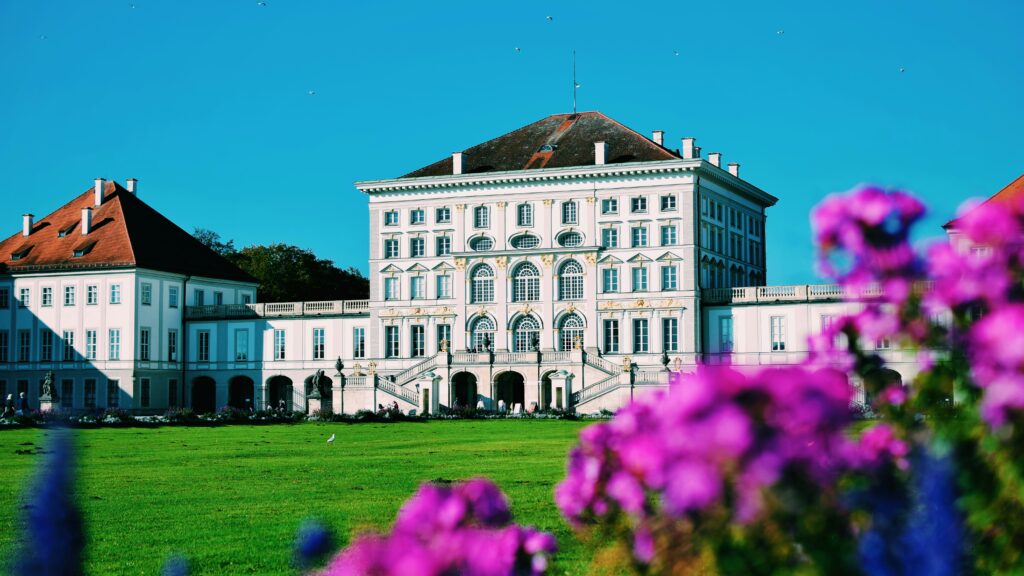
Munich’s magnificent Baroque palace is one fo the most stunning landmarks in Germany. Begun in 1664, most of Nymphenburg Palace was complete by 1679, but would later be added to significantly by Max Emanuel himself as well as by later rulers.
Visitors can explore the opulent State Apartments, with their intricate stuccowork, gilded decorations and valuable artworks. Admiring the huge fountains and the symmetrical park grounds from the grand staircase is a sight not to be missed. In the summer months you can take a gondola ride on the canal that flowis through the palace grounds. The palace also houses the Marstallmuseum, showcasing a splendid collection of royal carriages and sleighs.
Discover a magical Munich on: Winter Wonderland
Bookmark for later: 7 Incredible experiences you’ll enjoy on our Oktoberfest, the Germanic Experience tour
8. Dachau Concentration Camp
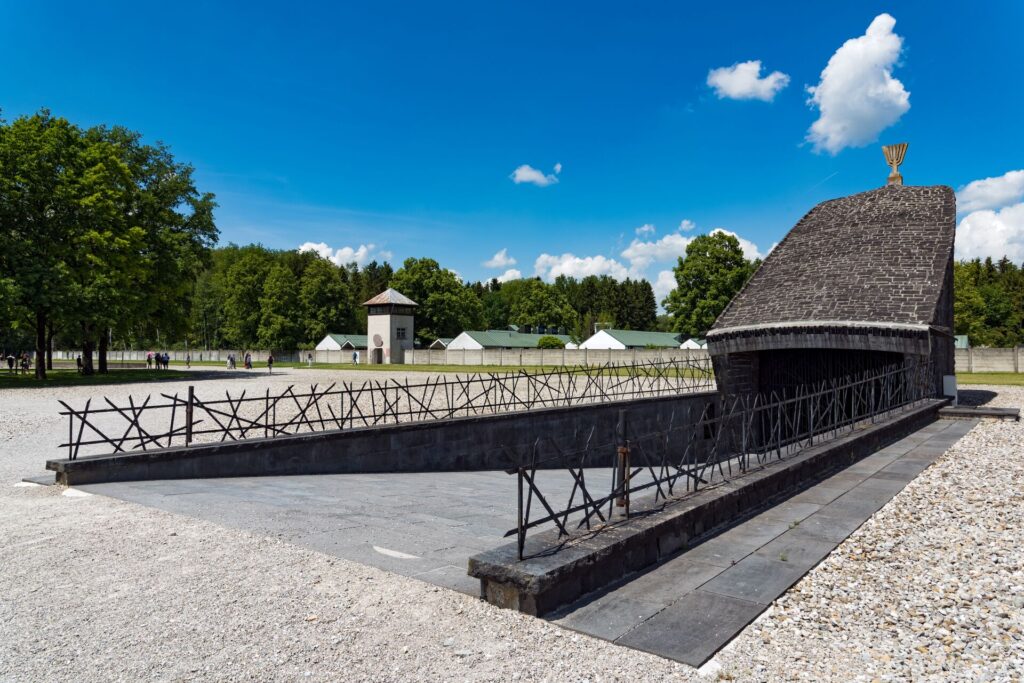
A sobering reminder of the atrocities of World War II, this former concentration camp near Munich serves as a memorial and museum honoring the victims of the Holocaust. A deeply moving landmark in Germany, Dachau was one of the first concentration camps established by the Nazis in 1933. Initially intended to detain political prisoners, it later became a model for other camps in the Third Reich.
The camp’s history is a grim reminder of the atrocities committed during the Holocaust, with thousands of prisoners enduring torture, starvation and medical experiments. Liberation came in 1945 when American troops discovered the camp’s horrors, revealing the extent of Nazi crimes to the world.
Today, the site features exhibitions documenting the camp’s history, displays of prisoners’ personal belongings, and memorials honoring those who suffered and perished within its walls.
Pay your respects on: Country Roads of Bavaria, Switzerland & Austria
Bookmark for later: 106 years later, why a visit to the Somme Battlefields will still move you
9. Rothenberg ob der Tauber
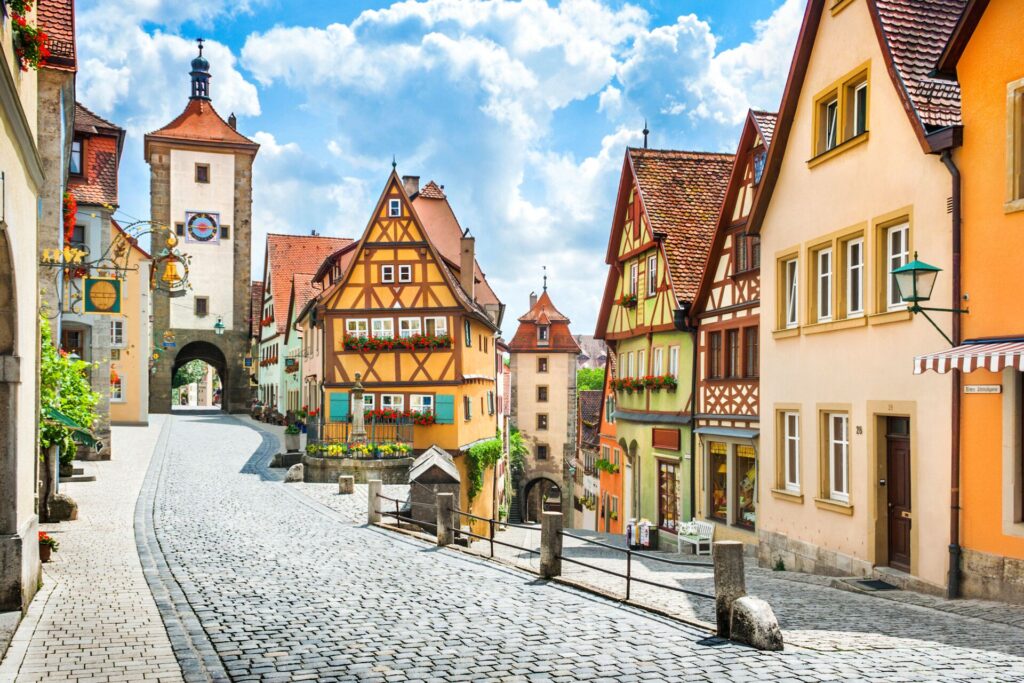
A picture-perfect town straight out of a fairy tale in the heart of Bavaria, Rothenburg Ob Der Tauber is encircled by ancient walls and adorned with half-timbered houses, cobblestone streets and charming squares. Transporting visitors back in time to the Middle Ages, the official history of Rothenburg is generally thought to date from the 10th century. Its well-preserved medieval architecture includes the famous Rathaus (Town Hall) and the towering St. Jakob’s Church. The town’s romantic ambiance is further enhanced by the enchanting views from the medieval town walls and the idyllic setting along the Tauber River.
Discover this on: European Flair
You may also enjoy reading: The German Town of Rothenburg is a Grown-Up Christmas Grotto
10. Berlin Cathedral
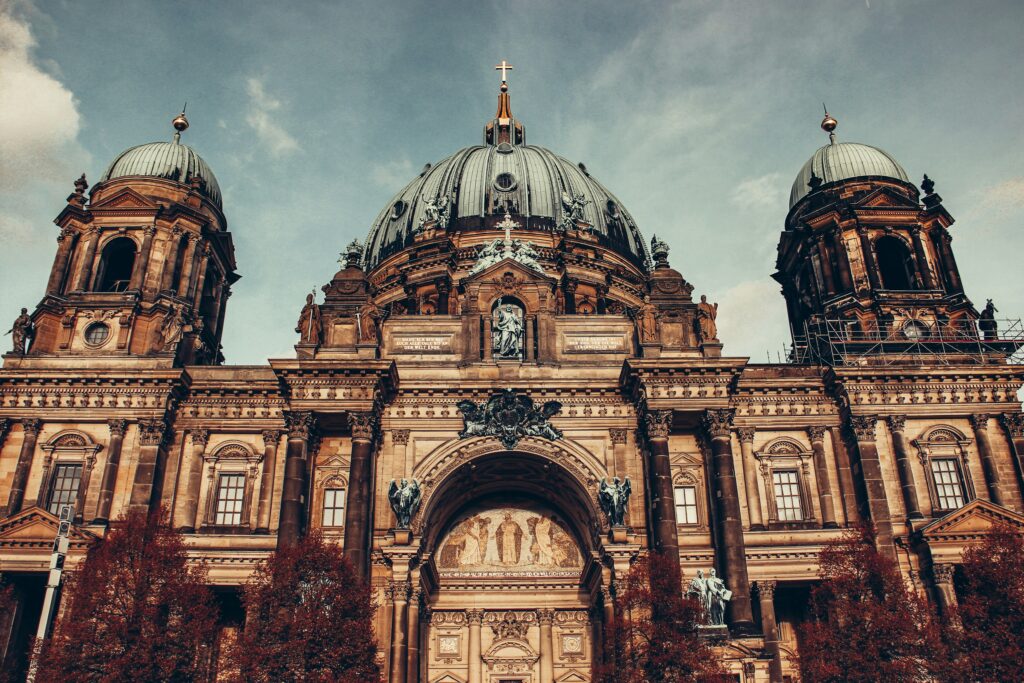
Berlin Cathedral, also known as the Berliner Dom, boasts a stunning neobaroque design and a commanding presence along the city’s skyline. Construction began in 1894 under Emperor Wilhelm II, aiming to rival St. Peter’s Basilica in Rome.
With its elaborate decorative and ornamental designs, the church interior is especially worth seeing. The Cathedral Church is dominated by a monumental dome crowned by a lantern with a golden cross and flanked by four towers. The dome also offers panoramic views of Berlin, providing a unique perspective of the city’s landscape (if you can manage the 270 steps).
Discover this on: Christmas Markets of Germany
Bookmark for later: 12 best Christmas markets in Europe you need to visit this winter
SAVE UP TO $2,000 PER COUPLE* ON YOUR FIRST PREMIUM TOUR.
Plus receive latest offers, travel inspiration, and discover how your travels will make a positive impact. Together, WE MAKE TRAVEL MATTER®. Subscribe Now11. Museum Island, Berlin.
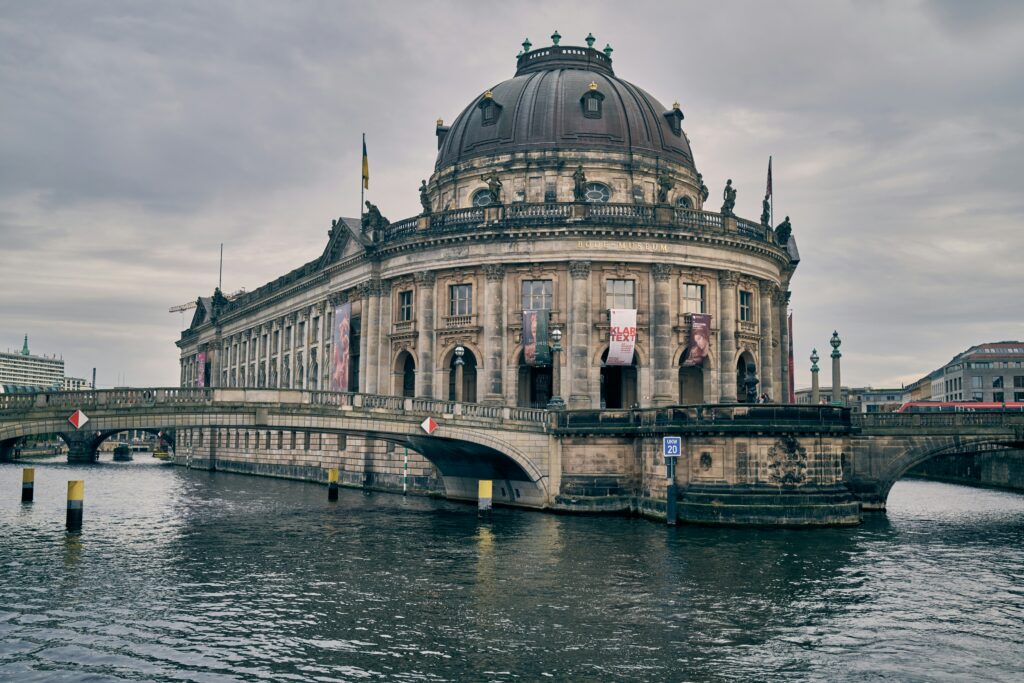
Museum Island, an ensemble of five museums on an island in the River Spree, is one of the highlights of European cultural tourism. A UNESCO World Heritage Site, it is renowned for its exceptional concentration of art museums and cultural institutions. In fact the island is home to five world-class museums: the Altes Museum, Neues Museum, Alte Nationalgalerie, Bode Museum and Pergamon Museum.
Each offers a unique perspective on art, history and archaeology, showcasing artifacts, sculptures and paintings from various civilizations and time periods. Highlights include the famous bust of Queen Nefertiti at the Neues Museum, the Ishtar Gate of Babylon at the Pergamon Museum, and the impressive collection of Greek and Roman antiquities at the Altes Museum.
Explore Berlin on: Highlights of Eastern Europe
You may also be interested to read: Poignant history comes to life before your eyes at the National Civil Rights Museum
12. Zugspitze
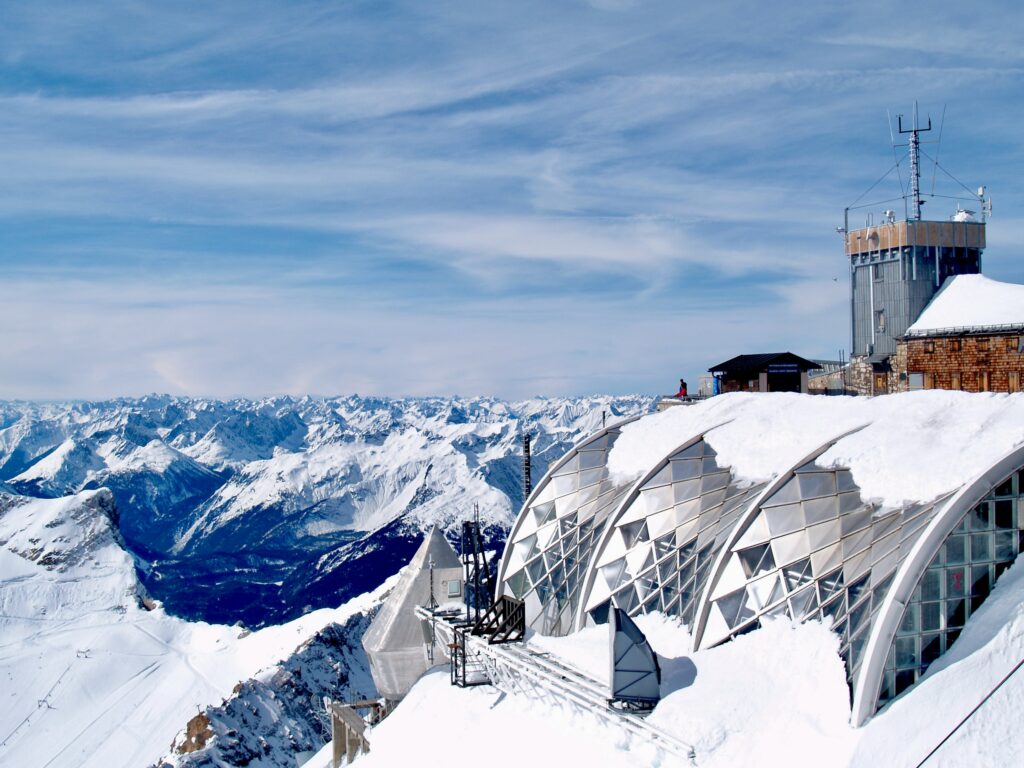
Situated in the Bavarian Alps, part of the Wetterstein range Zugspitze, at 2,962 meters above sea level, proudly claims the title of Germany’s highest peak.
Though dwarfed by neighbouring mountains across the Austrian border, Zugspitze offers breathtaking panoramic views of the surrounding mountains in Germany and beyond. A great destination for outdoor enthusiasts year-round, you can enjoy a range of recreational activities such as hiking, skiing and mountaineering.
Zugspitze also boasts the exhilarating experience of Germany’s highest cable car, whisking visitors to the summit in minutes. At the top you can enjoy refreshments at the mountain’s restaurants while soaking in the awe-inspiring views of the Alps.
If you love mountains you may enjoy reading: Mountain Festivals You Can’t Miss: From Folk Festivities to Parades
13. Black Forest
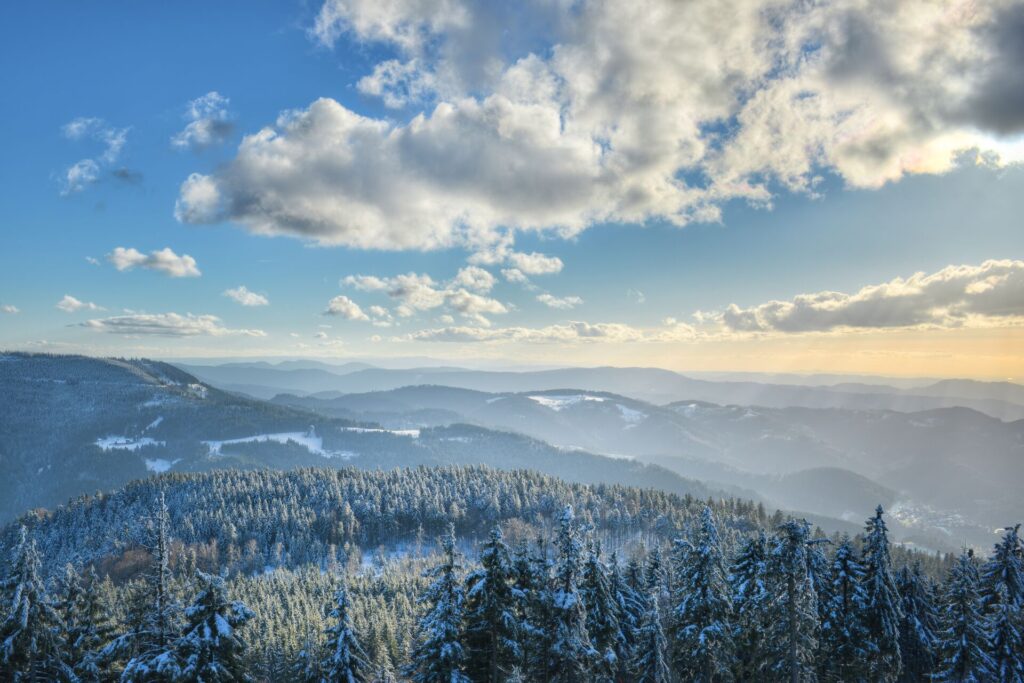
The Black Forest, or Schwarzwald, is one of Germany’s most famous natural landmarks, located in the southwest. Renowned for its dense forests, villages with half-timbered houses and sensational natural beauty, the Black Forest is also the birthplace of the cuckoo clock, and known for local delicacies like Black Forest ham and cherry cake.
The Romans dubbed the mountain range the “Black Forest” due to its dense conifer trees, appearing dark green. Though not truly black, its thick spruce canopy obscured light, earning the name “silva nigra.” Regrettably, deforestation has thinned the forest over time.
The Black Forest boasts popular thermal springs that draw tourists. Originating from Roman times, this communal bathing tradition persists with 12 thermal springs encircling Baden-Baden and 30 accessible spas. These mineral-rich waters are believed to offer healing benefits, making them ideal for a relaxing soak after a strenuous hike
Spend time in the Black Forest on: Alpine Christmas Markets
Bookmark for later: Making time: in conversation with one of Germany’s artisan cuckoo clock makers
14. Rhine Valley
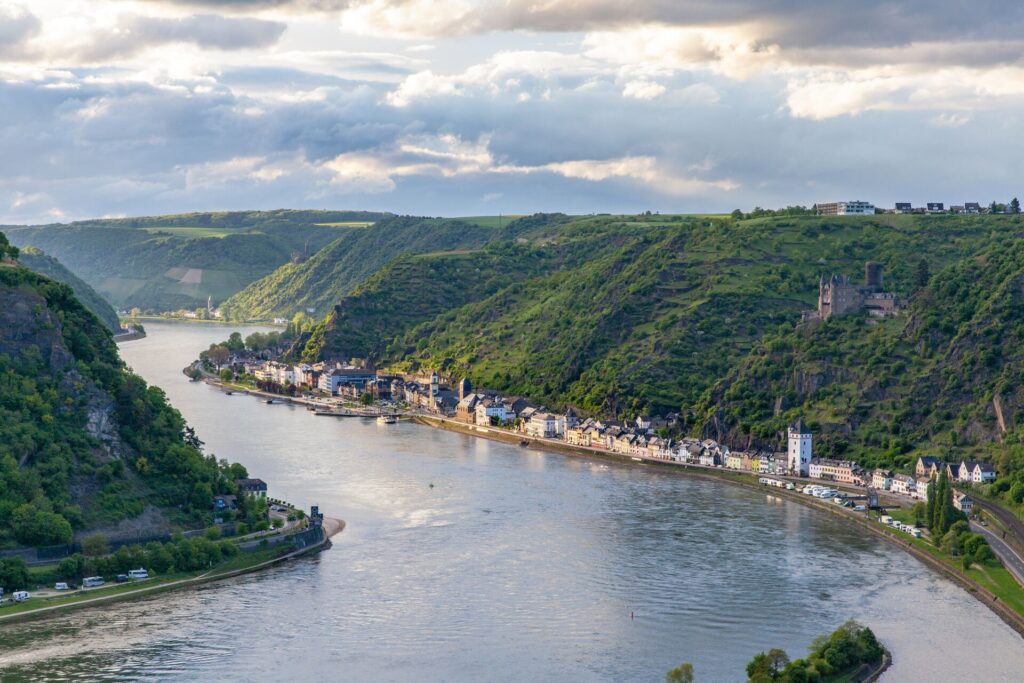
The Rhine Valley, a UNESCO World Heritage Site, encompasses beautiful landscapes, historic towns and renowned vineyards along the Rhine River. Its picturesque scenery features rolling hills, terraced vineyards and medieval castles perched atop cliffs, making it one of the most stunning natural landmarks in Germany. The valley’s charming villages, such as Bacharach and Rüdesheim, showcase Germany’s cultural heritage with half-timbered houses and cobblestone streets. The Rhine Gorge, a narrow section of the valley, features dramatic cliffs and imposing fortresses, including the iconic Lorelei Rock.
Stretching over 764 miles, the Rhine River is the second-longest river in Europe. It in fact flows through six countries: Switzerland, Liechtenstein, Austria, Germany, France and the Netherlands. The Rhine Valley section of the river, between Bingen and Koblenz in Germany, has been recognized as a UNESCO World Heritage site since 2002.
Enjoy the Rhine Valley on: Best of Germany
Read more about this region: The Rhine Valley: Romance and Relaxation in the Heart of Germany
15. Heidelberg Castle
Heidelberg is one of the most romantic cities in Germany, thanks to its picturesque riverside location, its beautiful old buildings and bridges, and the castle ruins that overlook the town center. Heidelberg Castle bears witness to centuries of history and turmoil. Founded in the 13th century, this famous landmark in Germany served as the residence of the Palatinate electors until lightning struck and destroyed much of it in 1764. Over the years, the castle was repeatedly damaged by wars and fires, yet each time it was rebuilt, showcasing different architectural styles. From the Renaissance to the Baroque, each era left its mark on the castle’s design. During the 19th century Romantic period, it became a symbol of German Romanticism, immortalized in literature and art.
There is no doubt that it’s the special blend of the past with the present that gives Heidelberg Castle its special charm. As the very embodiment of German Romanticism, visitors feel a little as though they have been transported to another world.
Visit Heidelberg on: Highlights of Europe
To explore many of these iconic landmarks in Germany, along with 5-star and 4 star hotels and premium dining, take a look at our September Sale for huge savings – hurry, limited time only.
LIKED THIS POST? SHARE WITH YOUR COMMUNITY
